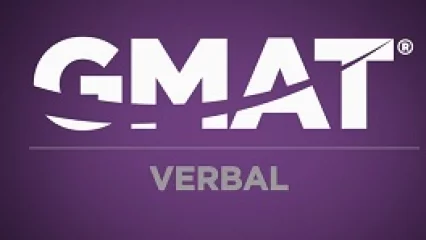As you will find out from this video, from the new GMAT tutorial series produced by PrepAdviser and examPAL, you will read a single-paragraph passage in which some argument will be presented, and you will be asked a question about it.
These questions deal with one concept: how facts turn into conclusions. In other words, when you learn something new about the world, what is the basis for what you have learnt? Is it only facts? Or are there assumptions as well? What could make you doubt this conclusion? What could strengthen it? The arguments you read always imply a certain causation – based on this evidence, x causes y – and the questions require you to assess this claim.
Check out: GMAT Critical Reasoning Question Type (Video)
As is the case in the entire Verbal section, your main challenge in these questions is time. Thus, the biggest mistake you can make is to read all of the answers. Besides being incredibly time-consuming, this can also be misleading.
Let’s look at an example. You may want to pause the video and answer.
Many new hotels and resorts were constructed in Central Africa during the past decade as a result of the constant increase in the number of tourists travelling there. Nevertheless, although there was no reduction in the prevalence of the mosquitoes causing swamp fever, the number of tourists to Central Africa who suffered from the disease has decreased.
Which of the following, if true, most helps explain this decrease?
In this question, the passage gives you enough information to enable you to answer the question precisely: if changes in the number of mosquitoes were not the cause of the decrease in the number of tourists suffering from swamp fever, it must be the tourists themselves who are better protected against the disease. Which is exactly what (C) tells you.
Let’s look at another question. Pause the video and give it a go.
Many new office buildings have emerged in Saint-Martin, virtually doubling the available office space. The city is expected to maintain its population and does not currently have any shortage of office space. Nevertheless, investors have almost tripled the amount they were willing to pay for any available office space or any future office building projects in the city.
Which of the following, if true, most justifies the investors’ willingness to pay more for office space in Saint-Martin?
This question calls for you to approach it using the logic of pricing: if the investors are willing to pay more for the product, they must be expecting to make a higher profit from each unit of the product. But how? Well, using the same logic, you will see there are really only two options here: lower cost or higher revenue. And since the passage tells you their costs are actually higher (three times as much), you know you are looking for an answer choice which gives you a reason as to why they can expect higher revenue. And that is exactly what (C) provides.
Check out: Save Time on GMAT Critical Reasoning (Video)
Sometimes, though, the question does not give you enough to go on, and you simply have to – as a matter of last resort – look at the answers.
Growing Wheat in 500-200 BC in the region of Damchan required the use of large quantities of water for irrigation, which had to be brought from remote locations. And yet, the Damchan people kept growing wheat, although they had the option to grow other, less water-demanding crops, such as vegetables.
Which of the following, if true, most helps to explain the Damchan’s preference to grow wheat during the period of 500-200 BC?
Here, you are being asked to identify a solution for a mysterious phenomenon. This question requires the Alternative approach of using the answers: it is not immediately obvious what the answer should be, and it seems to make sense to compare the answers. But let’s do so critically, of course: (A) is irrelevant, because it involves something which happened before the period under discussion. Notice we are talking about 500-200 BC: that is 500 to 200 before Christ. So before 500 BC is out of your range, not interesting. Similarly (B) is irrelevant because it describes something from current times and not from the relevant era. (C) looks promising: it tells you the reason the farmers planted these crops. But wait… you are asked why the Damchan people in general made this choice, and the ruler is part of the people. Why did the ruler order this? You do not know, so this is not the answer. (D) does not help you either: it describes other crops, and the fact they were not grown only makes the case of the wheat more mysterious. (E) is what you are looking for: a legitimate reason for wheat to be grown.
So, to recap: you should try answering the question before reading the answers!
Check out: GMAT Tutorials: Reading Comprehension (Video)
This is the first commandment of Critical Reasoning questions. It is really the only way to solve all the questions in the time at your disposal, and it is a crucial way to avoid confusion and zero in on what you are actually looking for.


